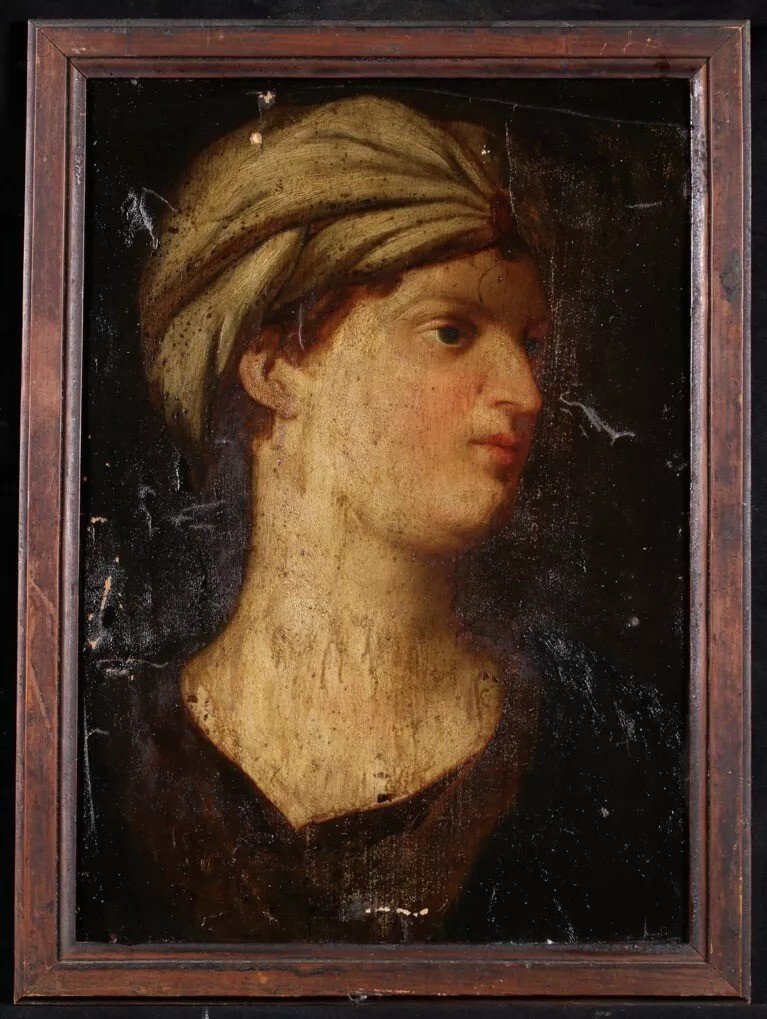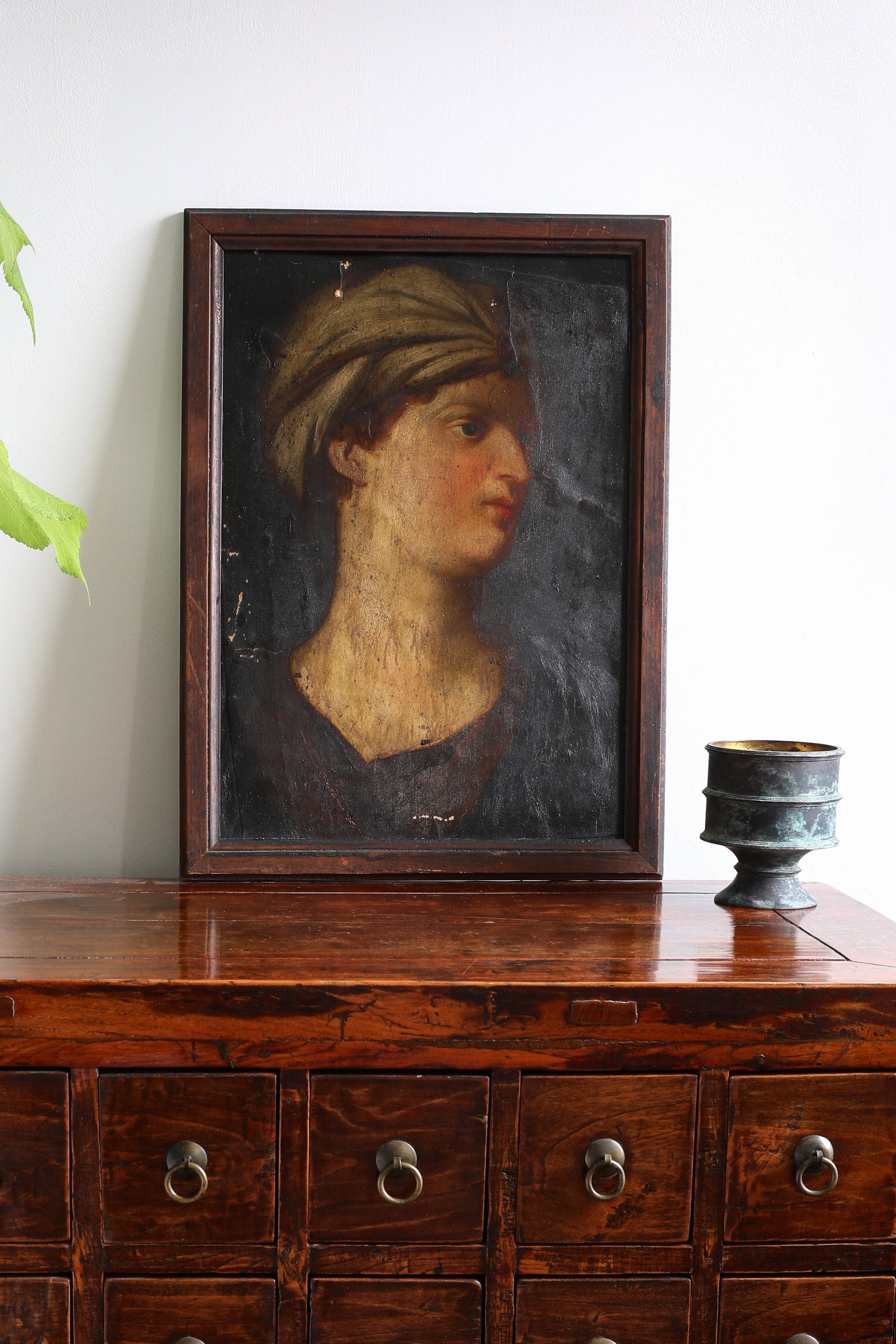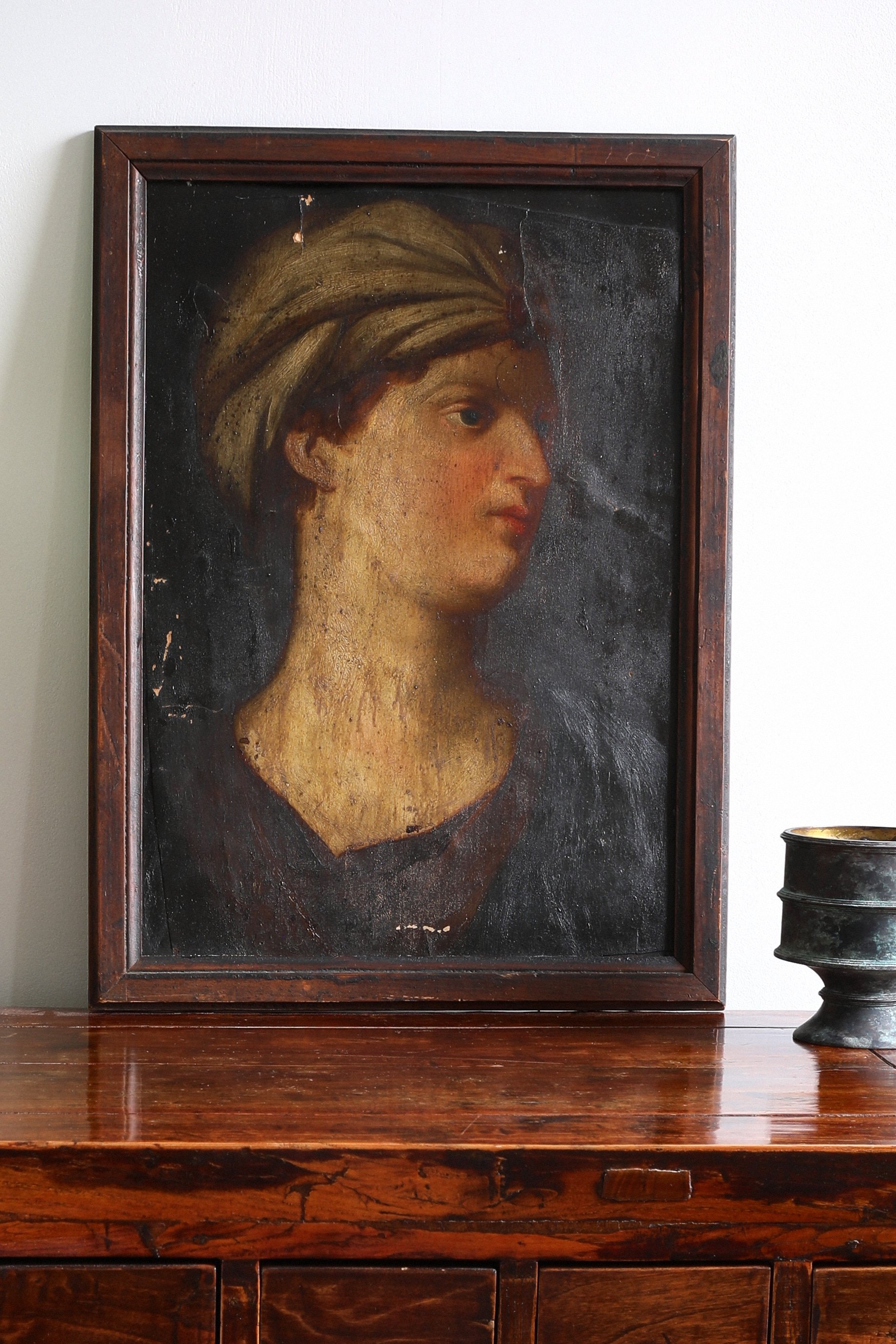 Image 1 of 8
Image 1 of 8

 Image 2 of 8
Image 2 of 8

 Image 3 of 8
Image 3 of 8

 Image 4 of 8
Image 4 of 8

 Image 5 of 8
Image 5 of 8

 Image 6 of 8
Image 6 of 8

 Image 7 of 8
Image 7 of 8

 Image 8 of 8
Image 8 of 8









17th Century Portrait of Louise de Lavalière, The King's Mistress
Divine 17th century portrait of Louise de Lavalière by Nicolas de Larmessin. Part of our collection of original 17th century prints of the royal court of Europe. A beautiful piece on its own and even better as part of a larger set. Hand numbered ‘26’ in ink by the printer.
Signed: “N. De Larmessin, Sculpsit’
Dimensions—
Frame Size: 11 5/8” x 14 5/8”
Print Size: 11.8” x 8.3”
Condition: Very good, wear consistent with age. Framed under Art Glass to protect against UV rays.
Shipping & Delivery for Large & High Value Items (Art, Lighting, & High Value Objects)—Shipping costs are not included in the sale price of this piece as it will vary greatly depending on location. Please contact us for shipping quotes. At checkout, please select the shipping option Invoice Sent After Purchase For Oversized and High Value Items. After purchase we will reach out with an invoice and to make arrangements. We always work to get the most affordable shipping rates while ensuring the safe delivery of our pieces. If you have any questions, please email orders@shopcurioshop.com.
Local Delivery—Local Delivery is available for Manhattan, Brooklyn, & Queens. Please email us to make arrangements.
About Louise de Lavalière
Louise de Lavalière was born on 6 August 1644 in Tours and died 7 June 1710 in Paris. Known as Louis XIV’s first mistress, she fist came to court as the maid of honor to Henrietta, the Duchess of Orléans wife of Louis XIV's brother Philippe I, Duke of Orlèans (1640–1701), who the court believed was having an incestuous relationship with her brother in law. To quell the court gossips, royal counselors orchestrated a fake relationship between Lavalière and the King with the royal secretary ghost writing love letters allegedly written by Louis XIV and La Vallière; other courtiers arranged late-night meetings between the king and the lady-in-waiting that projected the air of a romantic tryst. The ruse quickly became fact as Louis XIV become infatuated with the cultured new courtier. La Vallière was recognized as the official royal mistress and bore the king four children: Charles (1663-65), Philippe (1665-66), Marie Anne de Bourbon (1666-1739), and Louis de Bourbon (1667-83). The king later legitimized his two surviving children and ennobled them under the respective titles Mademoiselle de Blois and Comte de Vermandois.
Long troubled by scruples over her adulterous affair, La Vallière underwent a religious crisis in 1670. After recovering from a serious illness, possibly smallpox, she made a confession of her sins and returned to the regular practice of the Catholic faith. The sudden conversion of a Versailles courtesan turned La Vallière into a religious celebrity humiliated Louis XIV, whose sexual infidelities and religious hypocrisy had become public knowledge. Only in 1674 did the monarch permit his former mistress to pursue her vocation as a nun. On April 19, 1674, La Vallière entered the Carmelite convent in Paris, where she would henceforth be known as Soeur Louise de la Miséricorde.
In 1671 in the immediate aftermath of her religious conversion, La Vallière composed Reflections on the Mercy of God. A semi-autobiographical work, this treatise studies the mercy of God for sinners, especially for courtesans who have renounced their sexual sins and sought a new penitential life in exile from the excesses of the court. She died on June 6, 1710 leaving behind two principal philosophical works to posterity: the treatise Reflections on the Mercy of God and her spiritual correspondence with the Maréchal de Bellefonds. She is buried in the cemetery of the Carmelite convent at Notre-Dame-des-Champs in Paris.
About Nicolas de Larmessin II
Nicolas de Larmessin II, usually referred to as Nicolas de Larmessin or Nicolas Ier de Larmessin, born in 1632 and died in 1694, was a French engraver and publisher based in Paris, under the name of La Pomme d'Or.
He is mainly known for his prints representing the kings of France, from Faramond to Louis XIV, the queens of France and several popes, as well as for the plates known as the Grotesque Costumes, representing different trades.
Divine 17th century portrait of Louise de Lavalière by Nicolas de Larmessin. Part of our collection of original 17th century prints of the royal court of Europe. A beautiful piece on its own and even better as part of a larger set. Hand numbered ‘26’ in ink by the printer.
Signed: “N. De Larmessin, Sculpsit’
Dimensions—
Frame Size: 11 5/8” x 14 5/8”
Print Size: 11.8” x 8.3”
Condition: Very good, wear consistent with age. Framed under Art Glass to protect against UV rays.
Shipping & Delivery for Large & High Value Items (Art, Lighting, & High Value Objects)—Shipping costs are not included in the sale price of this piece as it will vary greatly depending on location. Please contact us for shipping quotes. At checkout, please select the shipping option Invoice Sent After Purchase For Oversized and High Value Items. After purchase we will reach out with an invoice and to make arrangements. We always work to get the most affordable shipping rates while ensuring the safe delivery of our pieces. If you have any questions, please email orders@shopcurioshop.com.
Local Delivery—Local Delivery is available for Manhattan, Brooklyn, & Queens. Please email us to make arrangements.
About Louise de Lavalière
Louise de Lavalière was born on 6 August 1644 in Tours and died 7 June 1710 in Paris. Known as Louis XIV’s first mistress, she fist came to court as the maid of honor to Henrietta, the Duchess of Orléans wife of Louis XIV's brother Philippe I, Duke of Orlèans (1640–1701), who the court believed was having an incestuous relationship with her brother in law. To quell the court gossips, royal counselors orchestrated a fake relationship between Lavalière and the King with the royal secretary ghost writing love letters allegedly written by Louis XIV and La Vallière; other courtiers arranged late-night meetings between the king and the lady-in-waiting that projected the air of a romantic tryst. The ruse quickly became fact as Louis XIV become infatuated with the cultured new courtier. La Vallière was recognized as the official royal mistress and bore the king four children: Charles (1663-65), Philippe (1665-66), Marie Anne de Bourbon (1666-1739), and Louis de Bourbon (1667-83). The king later legitimized his two surviving children and ennobled them under the respective titles Mademoiselle de Blois and Comte de Vermandois.
Long troubled by scruples over her adulterous affair, La Vallière underwent a religious crisis in 1670. After recovering from a serious illness, possibly smallpox, she made a confession of her sins and returned to the regular practice of the Catholic faith. The sudden conversion of a Versailles courtesan turned La Vallière into a religious celebrity humiliated Louis XIV, whose sexual infidelities and religious hypocrisy had become public knowledge. Only in 1674 did the monarch permit his former mistress to pursue her vocation as a nun. On April 19, 1674, La Vallière entered the Carmelite convent in Paris, where she would henceforth be known as Soeur Louise de la Miséricorde.
In 1671 in the immediate aftermath of her religious conversion, La Vallière composed Reflections on the Mercy of God. A semi-autobiographical work, this treatise studies the mercy of God for sinners, especially for courtesans who have renounced their sexual sins and sought a new penitential life in exile from the excesses of the court. She died on June 6, 1710 leaving behind two principal philosophical works to posterity: the treatise Reflections on the Mercy of God and her spiritual correspondence with the Maréchal de Bellefonds. She is buried in the cemetery of the Carmelite convent at Notre-Dame-des-Champs in Paris.
About Nicolas de Larmessin II
Nicolas de Larmessin II, usually referred to as Nicolas de Larmessin or Nicolas Ier de Larmessin, born in 1632 and died in 1694, was a French engraver and publisher based in Paris, under the name of La Pomme d'Or.
He is mainly known for his prints representing the kings of France, from Faramond to Louis XIV, the queens of France and several popes, as well as for the plates known as the Grotesque Costumes, representing different trades.































